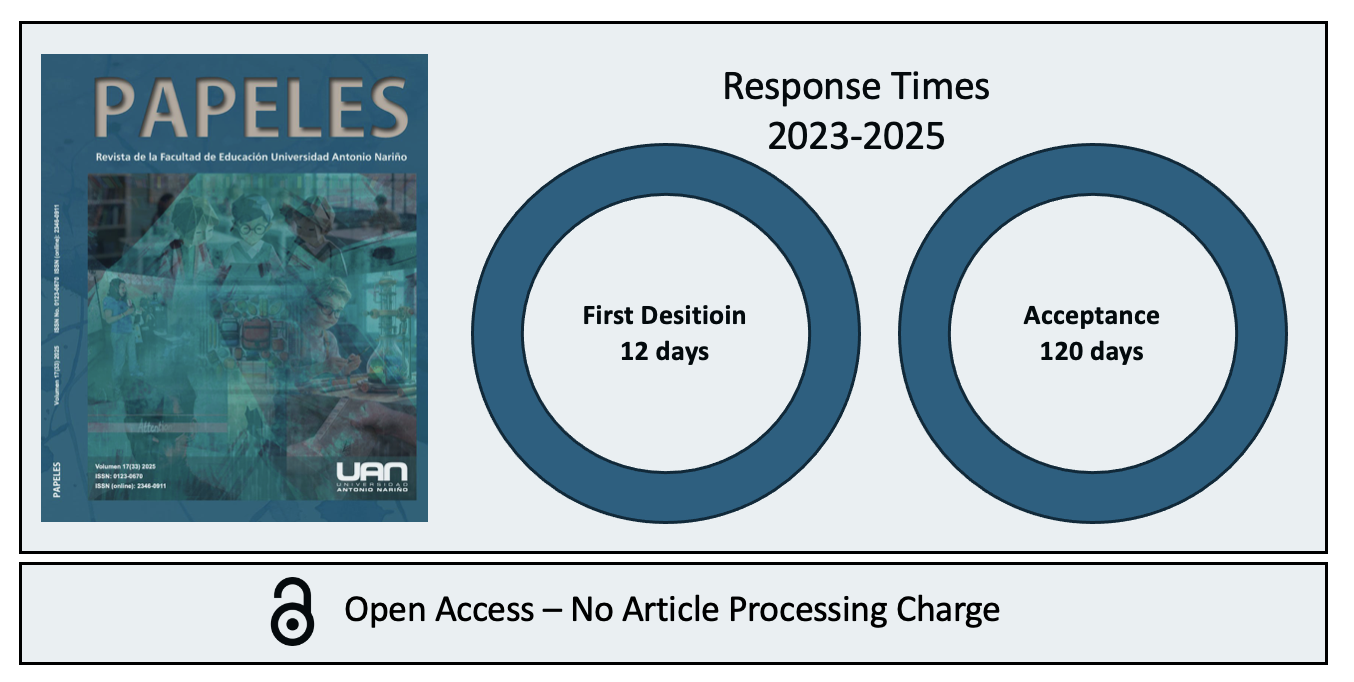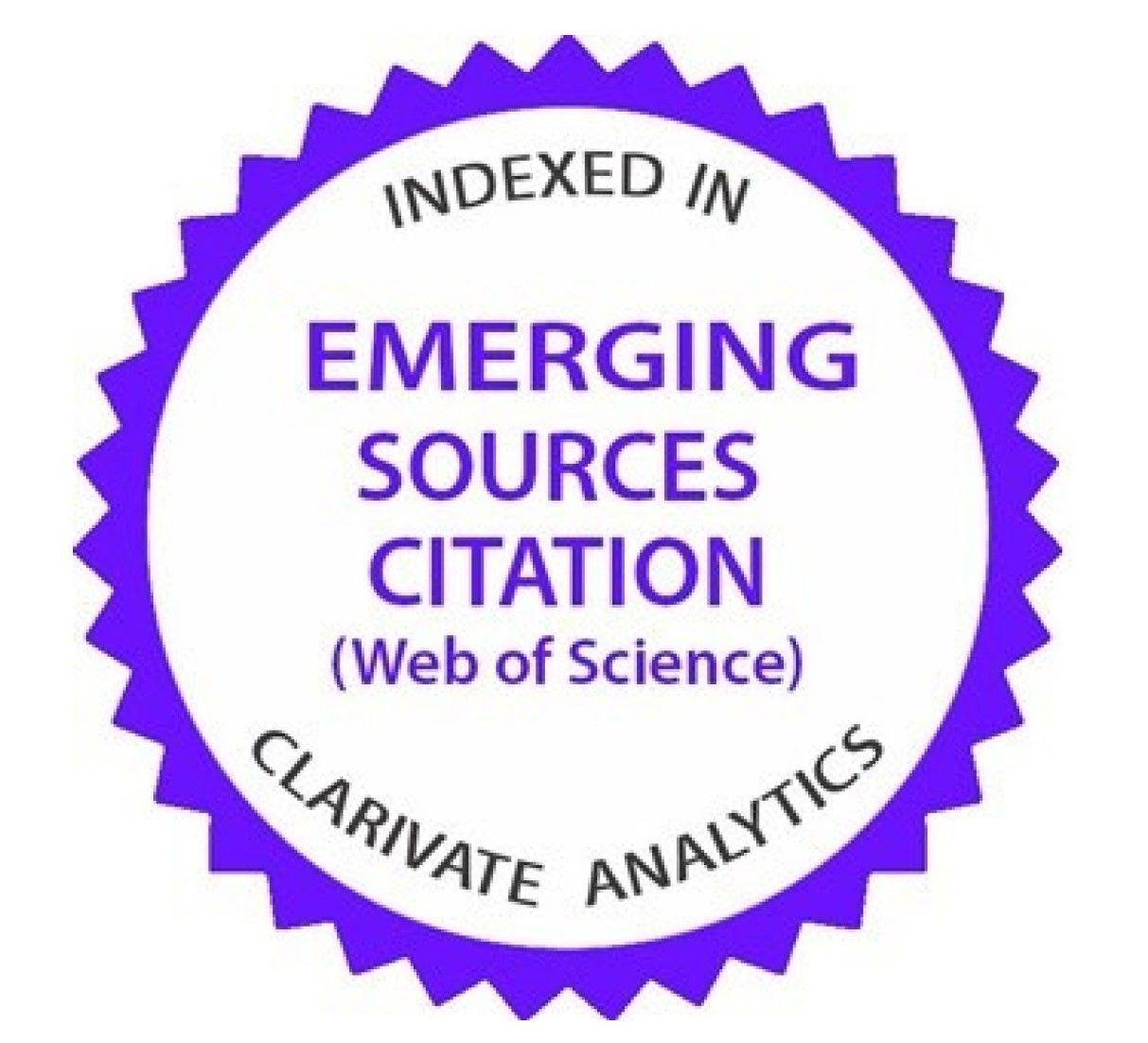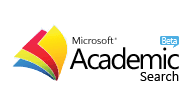Virtual learning environments and metacognition: a bibliometric study in the Latin American context
Keywords:
metacognition, information and communication technologies, virtual learning environments, bibliometric studiesAbstract
Information and Communication Technologies started to be used as Virtual Learning Environments (VLE), in the nineties and have become a regular resource in the educational field. Its accelerated development and variety of tools make them high potential instruments able to transform an educational system designed for the industrial society and inconsistent with the requirements of the XXI century, characterized by its emphasis on knowledge and creativity as first order resources. The purpose of the current article is to present the results of a bibliometric study about the Latinamerican research production in the area of Virtual Learning Environments and metacognition, developed in the last eight years and published in three different databases: SciElo, Ebsco y Proquest. Data about number of articles, types of VLE, educational levels and fields in which these researches have been done. Finally, the contributions and future directions of these studies are exposed.
Downloads
References
Adell, J. y Castañeda, M. (2012). Tecnologías emergentes, ¿Pedagogías emergentes? En: Hernández, J., Pennesi M., Sobrino, D. & Vázquez, A. (2012). Tendencias emergentes en educación con TIC. Barcelona: Espiral. P. 13-32.
Argüelles, D., Nagles N. (2007). Estrategias para promover procesos de aprendizaje autónomo. Colombia, Alfaomega.
Beetham, McGill y Littlejohn, (2009). Thriving in the 21st century: Learning Literacies for the Digital Age (LLiDA project). Recuperado el 30 de mayo de 2014 de http://www.jisc. ac.uk/media/documents/projects/llidareportjune2009.pdf. Recuperado el 2/6 /2014.
Brunner, J. J. (2008). ¿Una sociedad movilizada hacia las TIC? En: Tedesco J., Burbules, N., Brunner, J. J., Martín, E., Hepp, P., Morrissey, J., Duro, E., Magadán, C., Lugo, M., Kelly, V. & Aguerrondoy, I. Las TIC: del aula a la agenda política. Buenos Aires: UNICEF.
Castells, M. (2009). Comunicación y Poder. Madrid. Alianza Editorial.
Castells, M. (2001). Internet y la sociedad red. Recuperado el 7 de junio de 2014 de http:// www.cabuenes.org/03/documentos/cursos/ globalizacion/bloque2/glob_blq2_08.pdf
Christensen, C., Horn, M. and Johnson, C. (2008). Disrupting Class: How Disruptive Innovation Will Change the Way the World Learns. McGraw-Hill.
Cobo, C y Moravec, J. (2011). Aprendizaje Invisible. Hacia una nueva ecología de la educación. Col·lecció Transmedia XXI. Laboratori de Mitjans Interactius / Publicacions i: Barcelona: Edicions de la Universitat de Barcelona.
Dillenbourg, P. (2000). Virtual Learning Environments. Learning in the New Millenium. Geneva: Geneva University.
Flavell. J (1979). Metacognition and Cognitive Monitoring. A new area of cognitive—developmental inquiry. American Psychology. Vol. 34, No. 10, 906-911
Flavell. J (1992). Cognitive Development: Past, Present, and Future. Development Psychology Vol 28, No 6, 998-1005.
Gillespie, H., Boulton, H., Hramiak, A. & Williamson, R. (2007). Learning and Teaching with Virtual Learning Environments. Exeter: Learning Matters.
Hernández, J., Pennesi M., Sobrino, D. & Vázquez, A. (2012). Tendencias emergentes en educación con TIC. Barcelona: Espiral.
Khan, S. (2012). The One World School House. Education Reimagined. New York: Twelve.
Mestre U., Fonseca, J. y Valdés, P. (2007). Entornos Virtuales de enseñanza aprendizaje. La Habana: Editorial Universitaria.
Morrissey, J. (2008). El uso de TIC en la enseñanza y el aprendizaje. En: Tedesco J., Burbules, N., Brunner, J. J., Martín, E., Hepp, P., Morrissey, J., Duro, E., Magadán, C., Lugo, M., Kelly, V. & Aguerrondoy, I. Las TIC: del aula a la agenda política. Buenos Aires: UNICEF.
Not, L (1983). Las pedagogías del conocimiento. Fondo de Cultura Económica. México.
O’Leary, R. y Ramsden, A. (2002). Virtual Learning Environments. En: The Handbook for Economic Lecturers. Recuperado el 2 de junio de 2014 de http://www.economicsnetwork.ac.uk/handbook/printable/vle_v5.pdf
Open Educational Resources (OER). En: Perspectives on open and distance learning: Open Educational Resources: Innovation, Research and Practice Commonwealth of Learning and Athabasca University, 2013
Osses Bustingorry, S. y Jaramillo Mora, S. (2008). Metacognicion: un camino para aprender a aprender. En: Estudios pedagógicos (Valdivia), 34(1), 187-197. Recuperado el 16 de marzo de 2014, de http://www.scielo.cl/ scielo.php?script=sci_arttext&pid=S0718- 07052008000100011&lng=es&tlng=es. 10.4067/S0718-07052008000100011.
Pea, R. (1989). Distributed intelligence and education. Social Science Research Council on Computers and Learning. British Virgin Islands.
Pletka, B. (2007). Educating the Net Generation: how to engage students in the 21st century. Santa Monica: Santa Monica Press.
Prensky, M. (2009). Teaching Digital Natives. Thousand Oaks: Corwin Press.
Prensky, M. (2001). Digital Natives, Digital Inmigrants. In On the Horizon, October 2001, 9 (5). Lincoln: NCB University Press. Recuperado el 3 de junio de 2014 de http:// www.marcprensky.com/writing/Prensky%20 -%20Digital%20Natives,%20Digital%20Immigrants%20-%20Part1.pdf
Royal Pingdom (2013). Internet 2012 in numbers. Recuperado el 2 de julio de 2014 de http://goo.gl/0p5K8
Salomón, Perkins y Globerson (1992). Coparticipando en el conocimiento: la ampliación de la inteligencia humana con las tecnologías inteligentes. En: Comunicación, lenguaje y educación.
Siemens, G. (2005). Conectivismo: Una teoría de la enseñanza para la era digital. En: International Journal of Instructional Technology and Distance Learning.
Tapscott, D. (2009). Grown up digital: How the Net generation is changing your world. New York: McGraw Hill.
UNESCO (2013). Enfoques estratégicos sobre las TICS en educación en América Latina el Caribe. Santiago de Chile: UNESCO.
Wellings. J. y Levine, M. (2009). The Digital Promise: Transforming Learning with Innovative Uses of Technology. Recuperado en 3 de julio de 2014 de Marzohttp://dmlcentral.net/ sites/dmlcentral/files/resource_files/Apple. pdf
Zubiría, J. (2006). Los Modelos Pedagógicos. Hacia un pedagogía dialogante. Bogotá: Magisterio.
Zucker, A. A. (2008a). Transforming Schools with Technology: How Smart Use of Digital Tools Helps Achieve Six Key Education Goals. Cambridge, MA: Harvard Education Press.
Zucker, A. (2008b). Lost in Cyberspace: A Review of Disrupting Class. The Concord Consortium. Recuperado en 3 de julio de 2014 de http://concord.org/sites/default/files/ pdf/2008_DisruptingClass_WhitePaper.pdf
Downloads
Published
-
Abstract647
-
PDF (Español)372
How to Cite
Issue
Section
License

This work is licensed under a Creative Commons Attribution-NonCommercial-ShareAlike 4.0 International License.






